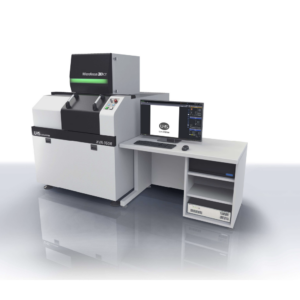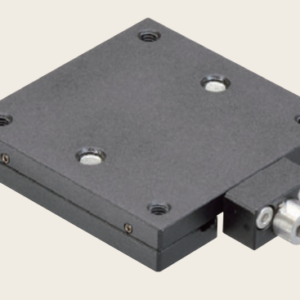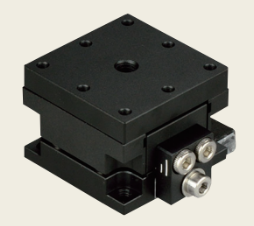Other Optics Instruments
Showing all 16 results
- Optical Instruments, Other Optics Instruments, Test Instruments, Testing Instrument & Equipment
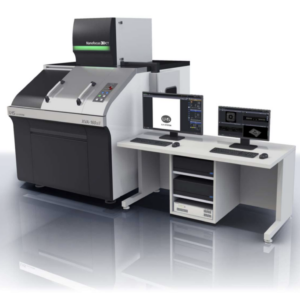
3D X-ray CT System XVA-160αII“Z” – U.H.SYSTEM
- Optical Instruments, Other Optics Instruments, Test Instruments, Testing Instrument & Equipment
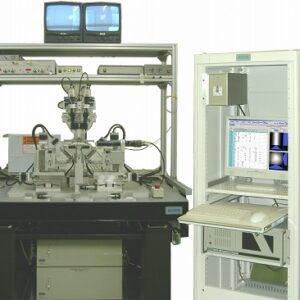
KS-502-AA PLC alignment system – KUGE Co.Ltd.
Optical Instruments, Other Optics Instruments, Test Instruments, Testing Instrument & EquipmentKS-502-AA PLC alignment system – KUGE Co.Ltd.
Because of the rigidity adopted SUS-made stage, make for a stable alignment disturbances such as temperature and vibration.
Motion made by our control program “Cockpit” performed by aligning high.
“Cockpit” Because you can customize for your own use, the type of optical device, it is possible to construct an environment for optimum alignment conditions and quality of various optical devices.SKU: n/a - Optical Instruments, Other Optics Instruments, Test Instruments, Testing Instrument & Equipment

KS-502-AM PLC auto aligner – KUGE Co.Ltd.
Optical Instruments, Other Optics Instruments, Test Instruments, Testing Instrument & EquipmentKS-502-AM PLC auto aligner – KUGE Co.Ltd.
Because of the rigidity adopted SUS-made stage, make for a stable alignment disturbances such as temperature and vibration.
Motion made by our control program “Cockpit” performed by aligning high.
“Cockpit” Because you can customize for your own use, the type of optical device, it is possible to construct an environment for optimum alignment conditions and quality of various optical devices.SKU: n/a - Optical Instruments, Other Optics Instruments, Test Instruments, Testing Instrument & Equipment

KS-502-M PLC evaluation alignment system – KUGE Co.Ltd.
Optical Instruments, Other Optics Instruments, Test Instruments, Testing Instrument & EquipmentKS-502-M PLC evaluation alignment system – KUGE Co.Ltd.
The measurement of the waveguide alignment device. The fast and stable alignment of the strip waveguide measurements.
Because of the rigidity adopted SUS-made stage, make for a stable alignment disturbances such as temperature and vibration.
Motion made by our control program “Cockpit” performed by aligning high.
“Cockpit” Because you can customize for your own use, the type of optical device, it is possible to construct an environment for optimum alignment conditions and quality of various optical devices.SKU: n/a - Optical Instruments, Other Optics Instruments, Test Instruments, Testing Instrument & Equipment

LED FIBER OPTIC ILLUMINATOR SLG-150V-NIR – REVOX Inc.
Optical Instruments, Other Optics Instruments, Test Instruments, Testing Instrument & EquipmentLED FIBER OPTIC ILLUMINATOR SLG-150V-NIR – REVOX Inc.
Near-infrared LED light source ideal for visual inspection and internal inspection
6 wavelengths of 850nm/940nm/1,060nm/1,100nm/1,150nm/1,200nm as standard lineup
Ideal for replacing halogen light sources
Because it is an LED light source, it contributes to long-term operation and reduction of heat damage to irradiated objects.SKU: n/a - Optical Instruments, Other Optics Instruments, Test Instruments, Testing Instrument & Equipment

Mechanical Stage System X Stage ALS-220-C2A1 – CHUO PRECISION INDUSTRIAL CO.LTD.
Optical Instruments, Other Optics Instruments, Test Instruments, Testing Instrument & EquipmentMechanical Stage System X Stage ALS-220-C2A1 – CHUO PRECISION INDUSTRIAL CO.LTD.
It is widely used for precision positioning applications such as cameras, sensors, and workpieces.
Motorized X stage using ball way for guide.
Positions of the Pre-HOME sensor and the LIMIT sensor are adjustable.SKU: n/a - Optical Instruments, Other Optics Instruments, Test Instruments, Testing Instrument & Equipment
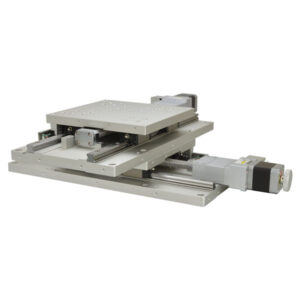
Mechanical Stage System XY Stage ALD-220-C2A1 – CHUO PRECISION INDUSTRIAL CO.LTD.
Optical Instruments, Other Optics Instruments, Test Instruments, Testing Instrument & EquipmentMechanical Stage System XY Stage ALD-220-C2A1 – CHUO PRECISION INDUSTRIAL CO.LTD.
It is widely used for precision positioning applications such as cameras, sensors, and workpieces.
Motorized XY stage using ball way for guide.
Positions of the Pre-HOME sensor and the LIMIT sensor are adjustable.SKU: n/a - Optical Instruments, Other Optics Instruments, Test Instruments, Testing Instrument & Equipment

Michelson interferometer – Shinyo Seiki Manufacturing Co.
Optical Instruments, Other Optics Instruments, Test Instruments, Testing Instrument & EquipmentMichelson interferometer – Shinyo Seiki Manufacturing Co.
It is the most basic product among the various interferometers that have been devised.
The application of this technology is the basic technology of our company. It has a very wide range of applications, including micro-measurement, measurement of optical wavelength and wavelength ratio, measurement of refractive index and dispersion ratio, surface roughness, and thin films.
SKU: n/a - Optical Instruments, Other Optics Instruments, Test Instruments, Testing Instrument & Equipment
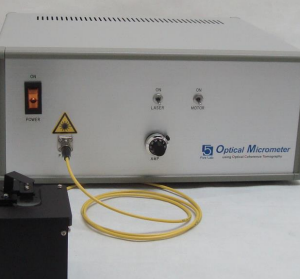
Optical Micrometer – Five Lab Co. Ltd.
Optical Instruments, Other Optics Instruments, Test Instruments, Testing Instrument & EquipmentOptical Micrometer – Five Lab Co. Ltd.
The Optical Micrometer is a non-contact, non-destructive tomographic measurement device using Michelson interferometry.
Optical micrometers are devices that irradiate light onto a sample, detect the return light from the surface, interior, and back surface, and measure the distance between each return light. Since it is a reflection measurement, it has a high degree of freedom and is non-contact. If the sample is transparent to the measurement light, the internal state and sample thickness can be easily measured.
SKU: n/a - Optical Instruments, Other Optics Instruments, Test Instruments, Testing Instrument & Equipment
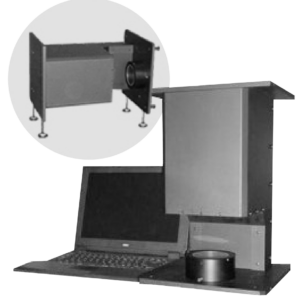
Schlieren apparatus – Shinyo Seiki Manufacturing Co.
Optical Instruments, Other Optics Instruments, Test Instruments, Testing Instrument & EquipmentSchlieren apparatus – Shinyo Seiki Manufacturing Co.
This is an optical system device that highlights the distribution of refractive index, which is too fine to be seen by the naked eye, of transparent materials as light and dark.
The density gradient of transparent materials is converted into light and dark, and projected with good contrast. In industry, it is used in inspection equipment for glass plates used to protect CCD elements.
SKU: n/a
Are you looking for a Other Optics Instruments product?
When selecting Other Optics Instruments for your company’s needs, there are several important points to consider during the comparison and evaluation process.
1. Performance Specifications
Evaluate the performance specifications of the other optics instrument. Look for instruments that provide high-quality and accurate measurements. Consider factors such as resolution, sensitivity, signal-to-noise ratio, and response time to ensure the instrument meets your specific needs.
2. Measurement Range
Consider the measurement range of the other optics instrument. Ensure that it covers the range of parameters or properties you need to measure in your application. It’s important to choose an instrument that can handle the full range of values you expect to encounter.
3. Measurement Techniques
Evaluate the measurement techniques employed by the other optics instrument. Depending on the specific instrument, it may use techniques such as spectroscopy, imaging, interferometry, or polarimetry. Understand the principles and capabilities of each technique and choose the one most suitable for your measurement requirements.
4. Sample Compatibility
Assess the compatibility of the other optics instrument with your sample types. Consider factors such as sample size, shape, transparency, and temperature requirements. Ensure that the instrument can effectively measure your samples without compromising their integrity or introducing artifacts.
5. Calibration and Standardization
Evaluate the calibration and standardization procedures of the other optics instrument. Look for instruments that offer reliable calibration methods and traceable standards. Consider the ease of calibration and the availability of appropriate standards for accurate and consistent measurements.
